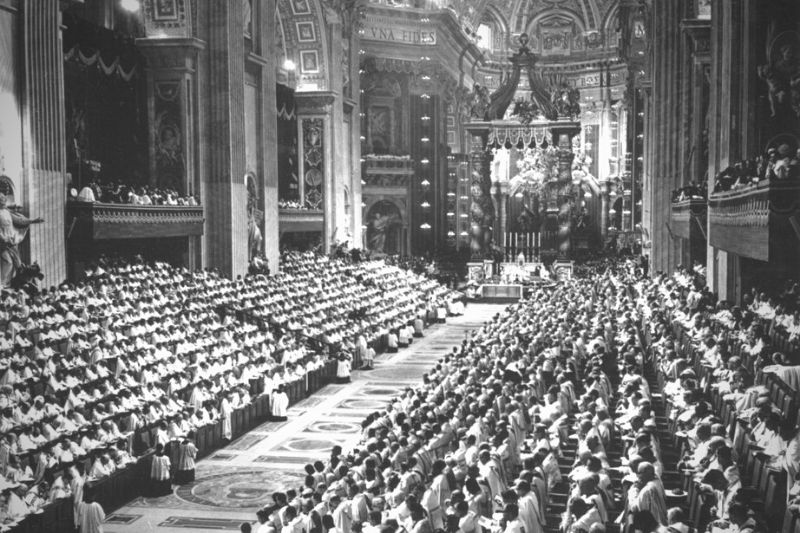We live in a time of outsourced memory. No longer do we need to remember the many intricate passwords we are required to enter before enjoying yet another convenience or necessity in our daily lives. Computers do the work for us, leaving us free to divert our attention elsewhere. While I am deeply grateful not to have to memorise such increasingly hard-to-remember passwords, I must admit that I seem to be losing a certain memory muscle. It’s not just the onset of middle age, I think (I hope not!).

Yet in this age of the convenient outsourcing of memory we suddenly find ourselves easily forgetting not just the small things, but also losing a greater appreciation for the larger story behind events. History is becoming increasingly irrelevant under the ever-more demanding pressures of the ‘now’, and our growing anxieties about the future. With such concerns in front of us, history seems antiquated, even irrelevant.
Let me give an example. In my professional life as an academic theologian, I encounter an analogous loss of memory regarding what was perhaps the most significant event in recent Catholic cultural memory, the Second Vatican Council (1962-1965). When I mention that I am the director of a research centre devoted to studying this Council, I have experienced two very opposite reactions. The first is one of visible and audible despair that ‘Vatican Two’ represented an unmitigated disaster; the Catholic Church, I am told, turned its back sixty years ago on all that was good, true and beautiful. This loss of an aesthetic sense of Catholic tradition is then articulated back to me as the need for a ‘reform of the reform’. We should only ever have had one Vatican Council, the first one, held from 1869 to 1870. In fact, sometimes the nostalgia for a lost past is so strong that it stretches all the way back to the Council of Trent (held between 1545 and 1563). But how would going back even further in time alleviate our dissatisfaction with events of only 60 years ago?
The second, opposite, reaction comes from people who feel that the Second Vatican Council did not go far enough. Yes, maybe it was relevant for its time, but how much of its vision for a Church engaged in the modern world was actually successfully implemented? Instead, how many hopes of that generation, particularly of women and lay people, were eventually dashed in the decades that followed? If the Second Vatican Council was not the answer, holding a third one today would fail to capture the imagination of those that remain.
Both groups of people, coming from opposite ends of the spectrum, and who normally disagree on most things, would actually in this case both agree that the Second Vatican Council is of little relevance today. What I miss, however, from both views is a proper historical appreciation of the Council. Both views are usually emotive responses, admittedly uttered in conversation without sufficient nuance, but nonetheless reflecting popular perceptions. My own dismay is that awareness of the careful historical work that has gone into situating the Council, and the long drafting process of its documents, is almost always lacking from such gut reactions.
But, while I could spend this time pleading for greater awareness of the careful historical studies of the Council, perhaps I can add a personal dimension to my plea for a greater appreciation of history, certainly when it comes to remembering the Second Vatican Council. My connection to this Council is neither direct nor immediate. To be honest, it was my late parents who fully experienced the theological, liturgical, and practical changes of the Council’s implementation. This wasn’t simply about whether the priest faced the congregation or not. Instead, before meeting each other they had both contemplated a more committed religious life. The option before them was a consecrated life either as a priest or nun. This would still be the case today, but the Second Vatican Council also made it possible for them to pursue further studies in academic theology as lay people, something that was not common before the Council. This resulted in the sense of validation that one could live a more committed religious life as lay people. The issue here is not whether they were pious Church-going Catholics. More fundamentally, they remained committed to faith. So strong was this commitment that it took hold in their children.
My own journey into academic theology flows directly from their commitment. So, even though I do not owe, nor have, a direct link back to the Second Vatican Council, nonetheless my parents’ commitment to religiosity in an increasingly secular and complex world, can in fact be traced back to the vision of those who worked tirelessly at the Council. One of my colleagues correctly refers to the Council as an ‘event’, meaning it cannot be reduced to one point in time, or just the documents. It was a whole process. In fact, it is a process that continues to this day. As a child of Singaporean parents yet born in Belgium and married to a Lithuanian wife, I reflect the global, multicultural, community that the Catholic Church embraced as it lived into the vision of the Council, a church very much in and of the modern world. Only last year, the Catholic Church appointed the first Singaporean cardinal. Imagine what it means for people like me to see the Catholic Church gradually begin to reflect back in its hierarchy the global church that is present in the pews.

As a trained biblical scholar, I have found that the Second Vatican Council offers an anchor to my work in academic theology. For instance, the Council’s document on revelation, Dei Verbum, always reminds me that I am more than just a biblical historian. I have a theological responsibility to bring the fruits of my research back to my faith community and help nourish their faith needs.
In addition, the Second Vatican Council has made it possible for lay academics like me to be involved in important theological encounters. I am honoured to be involved in ecumenical dialogue as a member of the Anglican Roman Catholic International Commission by appointment from the Vatican. Then there is my interfaith work, in Jewish-Christian and Christian-Muslim relations, which flows directly from the Council’s document, Nostra Aetate, a document that considers dialogue with other religions as a theological necessity.
I would therefore like to suggest that we can bypass the seeming impasse of competing and opposite views of the Council by concentrating on the personal reasons and connections that link us back indirectly, and yet vitally, to that momentous event in recent Catholic history. In remembering the past, our involvement in that act of remembering matters. We re-member the past. It is we who keep the ongoing legacy of the Second Vatican Council alive. We cannot outsource memories of the Council to perceptions borrowed from others. We owe it to ourselves, if we are to remain committed as people of faith, to recognise that it is we who give meaning to that faith. It is a collaborative process in every much the same way that the Second Vatican Council was a collaborative process in its time. It wasn’t simply left to the Pope (for there were two popes who presided) or the Council fathers, or the theologian consultors. It was all of us. So too is the task that lies ahead of us today. It is we, all of us, and not simply the hierarchy of the Catholic Church, who are entrusted with the task of weaving further the great story of faith that precedes us. And together we will help to map the future that lies ahead of us.
Dr Emmanuel Nathan is Director of the Research Centre for Studies of the Second Vatican Council at the Faculty of Theology and Philosophy, Australian Catholic University. He is based in Sydney.
Main image: 9 September 1963: H H Pope Paul VI (Giovanni Battista Montini) opened the second session of the Ecumenical Council at the Vatican. (Keystone/Getty Images)